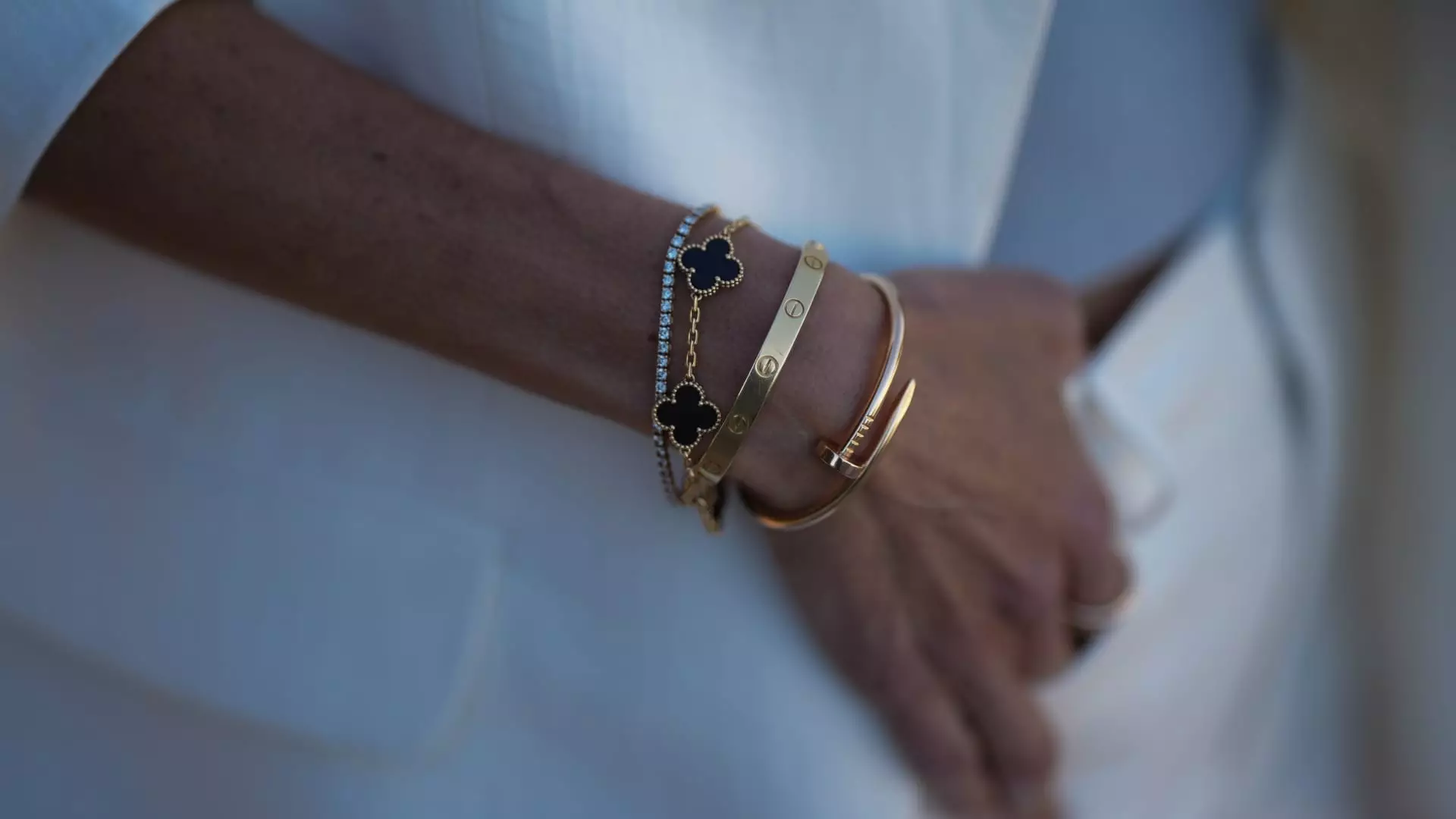As 2025 unfolded, many in the luxury retail sector clung to the hope that the industry’s recent dip was merely a hiccup on the way to a robust recovery. Analysts and luxury brands alike anticipated a resurgence driven by post-election optimism, pent-up demand, and holiday shopping fever. However, reality cast a much darker shadow. Despite the faint glimmers of hope—such as a modest decline in May and some positive signs in jewelry—concrete evidence suggests that the sector’s recovery remains elusive. The data from Citigroup paints a sobering picture: luxury credit card spending in the U.S. during the first five months of 2025 has actually declined compared to the same period last year. This stark reality shatters the myth of an industry on its way back to pre-pandemic glory.
The Myth of Resilience — What the Numbers Really Say
The veneer of resilience in luxury spending masks deeper vulnerabilities. While a slight uptick in May—at 1.7% decline—may appear encouraging, it is a fragile anomaly rather than a meaningful reversal. When considering four-month trends, declines of 8.5% to 6.8% dominate the narrative. The purported growth in the top luxury brands, with Hermès leading the charge, is equally misleading. A mere 0.2% increase in annual spend does little to suggest a thriving industry; it signals stagnation disguised as recovery. The real story emerges in the disparity among categories. Jewelry stands out as the sole bright spot, with a 10.1% increase in spend year-over-year for May and continuous monthly growth since September. But this isn’t the proof of a booming market—it’s a reflection of exclusive, high-end consumer behavior that remains detached from broader economic realities. The fact that some luxury jewelry brands are experiencing an 11.7% spending increase among existing customers despite a 2.7% loss of clientele highlights a critical trend: wealthier consumers are tightening the purse strings but still willing to spend more on select items.
Luxury Jewelry: An Investment and Emotional Asset
The resilience of jewelry emphasizes a fundamental truth about luxury goods: their perception as investment pieces and emotional valuables. Citi analyst Thomas Chauvet rightly identifies jewelry as more than just adornment; it’s a store of value, a sentimental vessel, and a celebration of life milestones. Gold prices’ upward trajectory since early 2025 further solidifies jewelry’s appeal as a hedge against economic uncertainty. Consumers are making calculated decisions—choosing jewelry that retains or even enhances its intrinsic value rather than splurging on handbags or ready-to-wear garments that have become commodified and less distinctive amid the pandemic’s style fatigue.
Questionable Luxury Handbag and Watch Markets
In stark contrast, the handbag sector is showing faint signs of fatigue. Price hikes of 30-40% since the pandemic—without a corresponding increase in value or innovation—have alienated consumers. Fashion brands have failed to introduce genuinely new or exciting products; most styles are indistinguishable after multiple seasons. This commodification of luxury handbags dilutes their exclusivity and diminishes their appeal, especially for younger, more discerning consumers who crave uniqueness over brand names.
Meanwhile, luxury watches, which traditionally epitomize timelessness and craftsmanship, face mixed results. Although some brands report a 14.7% increase in spending compared to last May, top-tier brands flounder with a 10% decline in the same period. The recent surge in Swiss watch exports stems largely from market strategies—retailers stockpiling inventory and manufacturers rushing product in reaction to tariff threats—not genuine consumer demand. The increased sales are, therefore, less a reflection of sustained consumer enthusiasm and more a tactical response to geopolitical threats that may dissipate as quickly as they arose.
The Broader Economic Context: A Sign of Fragility
Underlying these sector-specific trends is a fragile macroeconomic environment. May’s retail uptick coincides with a weaker U.S. dollar, which temporarily bolstered Americans’ ability to travel and spend abroad on luxury goods. Yet, this is a double-edged sword: the same dollar weakness signals broader economic instability. The impending expiration of tariffs and geopolitical conflicts in the Middle East threaten to disrupt that fragile balance even further, potentially shrinking the upward momentum in luxury spending.
Moreover, a significant portion of the luxury market—particularly what can be classified as high-net-worth individual spending—is increasingly scrutinized for its sustainability. Wealth concentration remains a focal point, with a shrinking middle class and an over-reliance on a tiny bracket of ultra-rich consumers becoming apparent. Luxury brands that fail to innovate, differentiate, and genuinely appeal to these consumers are doomed to stagnate. This is not an industry poised for growth but one teetering on the edge of contraction under the weight of inflationary pressures, geopolitical uncertainty, and a tired product cycle.
The Reality Check for An Overhyped Market
The harsh truth is that the luxury market in 2025 is far from rebounding robustly. Instead, it is revealing underlying weaknesses that few industry insiders want to admit. The illusion of a recovery is primarily built on the spending habits of a tiny, increasingly discerning elite—a fraction of the market that can afford to indulge regardless of macroeconomic turmoil. For the rest of the consumer landscape, luxury remains a less attainable dream, and the industry’s heavily inflated prices and lack of innovation only deepen this divide.
Luxury brands, once celebrated for their craftsmanship and exclusivity, are now heavily reliant on psychological investments—jewelry as a store of value, handbags as status symbols—rather than genuine product excellence. Meanwhile, broader economic dislocations, geopolitical tensions, and inflation threaten to drain the once-ready pipeline of wealthy spenders. Those who expect a quick turnaround are merely chasing illusions, ignoring the signs that luxury’s golden era might be permanently compromised by the realities of a shifting global economy.

